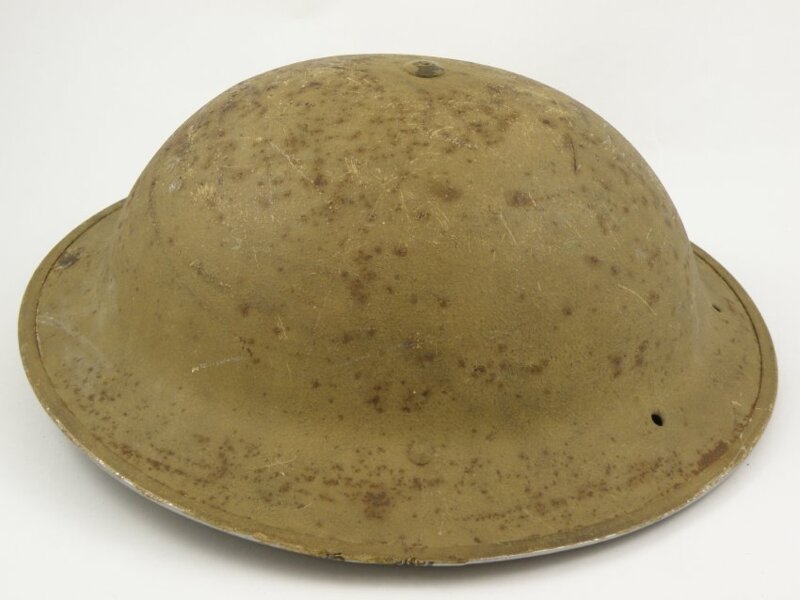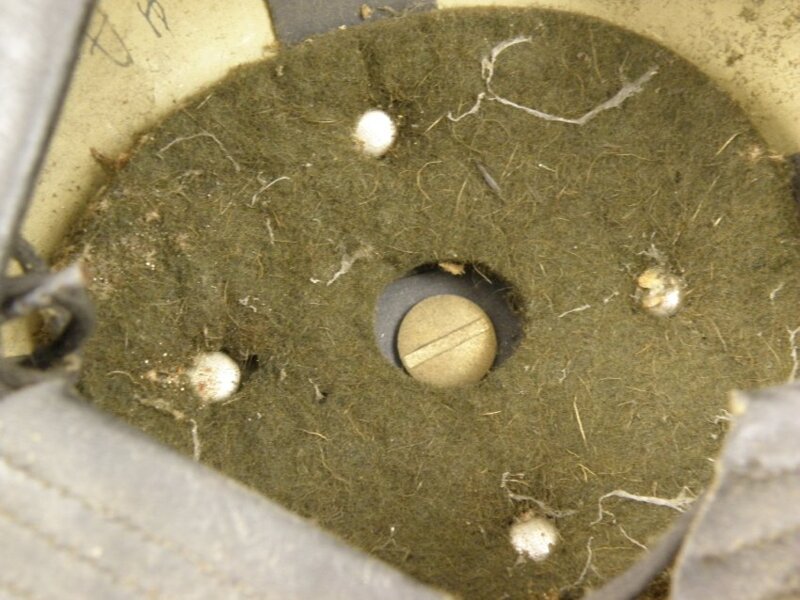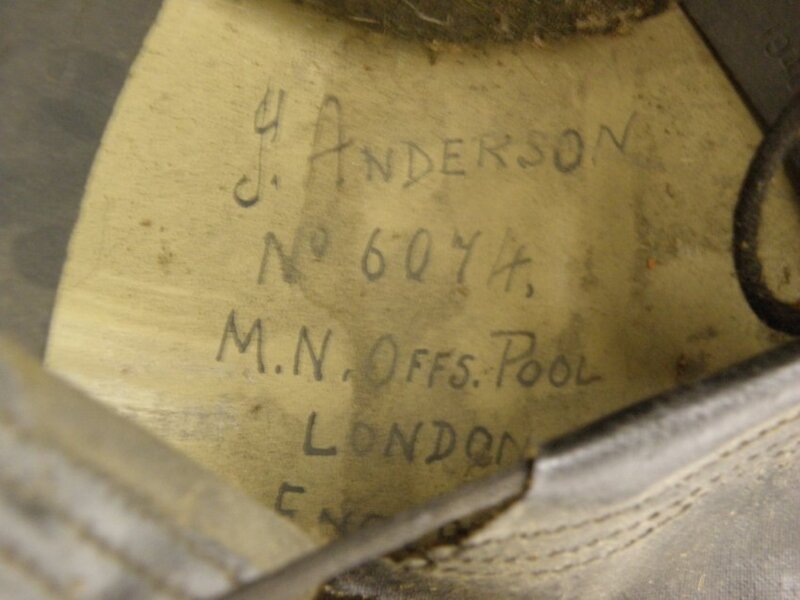Mk II Infantry Helmet
Item
Title
Mk II Infantry Helmet
Description
British Brodie Mk II Infantry Helmet Rough textured desert tan coloured helmet , possibly a North African issue with holes on neck brim for addition of neck flap (Havelock) for sun protection. Early model tan canvas webbing single loop strap with sliding buckle chin strap, with integral spring system at point of mounting, which attaches to each side of the helmet bowl. The mounting bracket is attached with a split rivet. The helmet rim weld has a long overlap, ending with a seam midway between the front and the back of the helmet. Inside the helmet eight black rubber buffers support a head band which is stamped 7¼ . Two bisecting rigid black compressed paper bands are secured by a single screw located at the very top centre of the bowl. Riveted to these bands and the interior bowl by four metal rivets, is a brown wool felt head cushion. The helmet rim weld has a long overlap. Inside the helmet eight black rubber buffers support a black oil cloth covered head band. Two rigid black compressed paper bands which are criss-crossed at the inner top and riveted to this headband forming a crown which is also secured by a single screw at the top of the helmet. The inner bowl is inscribed with the following, G. Anderson No. 6074, M.N. OFFS. POOL LONDON, ENGLAND
Date
Identifier
008.070.001
Provenance
During World War II, the North African Campaign took place in North Africa from 10 June 1940 to 16 May 1943. It included campaigns fought in the Libyan and Egyptian deserts (Western Desert Campaign also known as the Desert War) and in Morocco and Algeria (Operation Torch) and Tunisia (Tunisia Campaign). The campaign was fought between the Allies and Axis powers. The Allied war effort was dominated by the British Commonwealth and exiles from German–occupied Europe. The United States entered the war in 1941 and began direct military assistance in North Africa, on 11 May 1942. Fighting in North Africa started with the Italian declaration of war on 10 June 1940. On 14 June, the British Army's 11th Hussars (assisted by elements of the 1st Royal Tank Regiment) crossed the border into Libya and captured the Italian Fort Capuzzo. This was followed by an Italian offensive into Egypt and then in December 1940 by a Commonwealth counteroffensive, Operation Compass. During Operation Compass, the Italian Tenth Army was destroyed and the German Afrika Korps, commanded by Field Marshal Erwin Rommel, was dispatched to North Africa, during Operation Sonnenblume, to bolster the Italian forces and prevent a complete Axis defeat.






